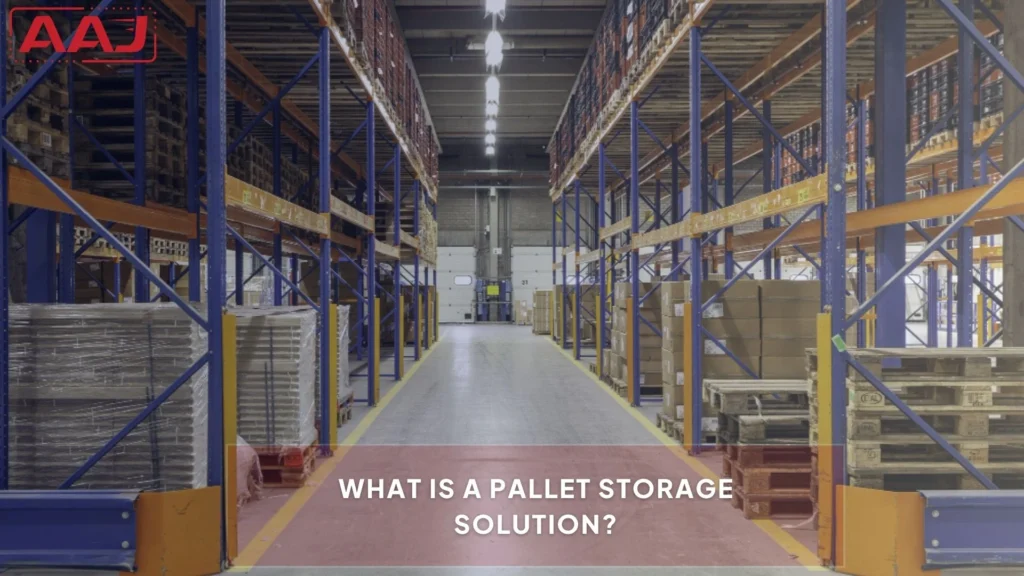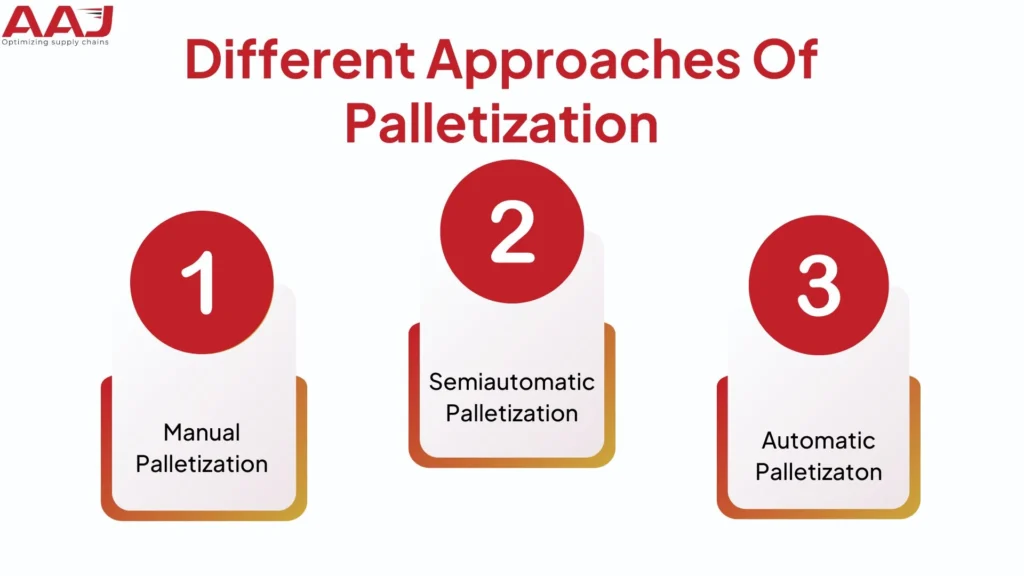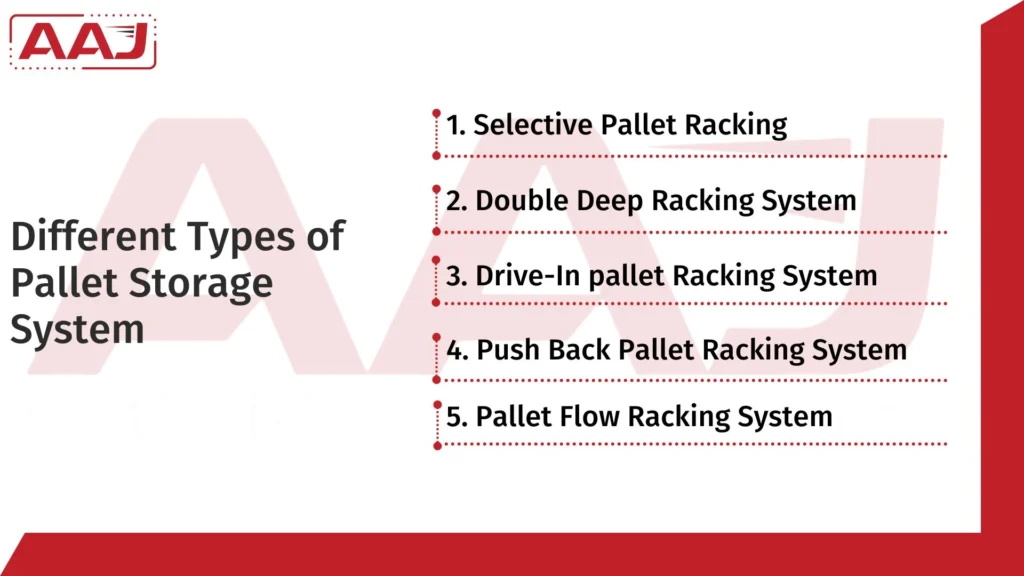Pallets are flat and sturdy structures that help support and transport goods. They are the backbone of any warehouse. Pallet storage helps to keep goods safe and facilitate smooth transportation, and it also helps to optimize the warehouse space.
A pallet storage system is one of the cost-effective ways of storing goods inside the warehouse space. It not only optimizes space but also stores large and heavy goods. A forklift moves the loaded pallets from one place to another. Pallets can even quickly transport large quantities of products more efficiently and safely.
What Is a Pallet Storage Solution?

The pallet storage system is a method of storing goods on pallets. It is one of the most essential parts of the warehouse storage system. Pallets safely store goods in an organized manner inside the warehouse. It allows easy inventory tracking and fast order fulfillment.
Pallets are horizontal surfaces that have extreme load-bearing capacity. They are usually wooden, plastic, or metal. Products are stacked on pallets either horizontally or vertically. Material handling equipment like forklifts moves and stacks the pallets inside the warehouse.
This process keeps the warehouse organized and speeds up the loading and unloading of goods. Pallets are stacked vertically, maximizing the space inside the warehouse.
Different Approaches Of Palletization

There are various approaches to palletization. We are listing them below.
1. Manual Palletization
Here, the warehouse company staff removes goods from the conveyor system and then places them on pallets as per the needs. The goods are stacked in the pallet layer by layer. The material handling equipment, like a forklift, will move the palletised goods and store them in their respective places.
2. Semiautomatic Palletization
There are many products kept inside the warehouse. Lifting heavy or bulky items can lead to injuries in warehouse staff. Semi Automatic palletizing is quite easy to maintain. It is suitable for small and medium enterprises.
Warehouses with small capacity can utilize semi automatic palletization to increase the efficiency of their operations.
Here, products are placed on the conveyor belt manually. The conveyor belt moves the products to the palletization station. The machines are programmed to load the product from the conveyor belt to the pallets. The forklift will move the loaded product to the storage. This palletization requires an operator to arrange goods on pallets.
Semi Automatic machines are less expensive and eliminate the bending and lifting work during product loading in pallets.
3. Automatic Palletization
It is one of the most advanced methods of palletization. Here, products are arranged in layers automatically on the pallets. It can load and arrange goods in 6 pallets within one minute without the assistance of warehouse staff. So, it is beneficial for companies who want to store large amounts of products quickly and efficiently.
Automatic palletization even accurately places the product inside the pallet. They can detect errors like incorrect spacing between the products and arrange them automatically. So, there are no human errors in automatic palletization.
There are usually two types of automatic palletization, which are mentioned below.
A. Conventional System
Here, the heavy products are transferred from the conveyor belt to the layer-building table. The layer-building table is precoded before, and it follows a fixed pattern. The automatic equipment will pick up the item and will arrange it in layers in pallets. It will follow the same pattern every time.
B. Robotic System
Here, robotic arms with vacuums or clamps at the end are utilized to pick up heavy goods from the conveyor table. They load the products onto the pallets. They are mostly used in harsh environments like cold storage.
Different Types of Pallet Storage System

The pallet storage systems can be of various types, which are underlined below.
1. Selective Pallet Racking
Selective pallet racking is quite popular in most modern warehouses. The pallets are loaded and unloaded on a selected shelf from the front. The warehouse staff can have direct access to all the stored products or packages.
The single pallet selective pallet racking is most suitable for first-in-first-out inventory management.
2. Double Deep Racking System
Here, two pallets are stored back to back in a single rack, so retrieving the back-placed item is difficult. This type of racking system is most suitable for last-in-first-out inventory management.
3. Drive-In pallet Racking System
It is a simple and affordable type of racking system. There are multiple racks with a series of lanes.
These lanes utilize forklifts to unload and load goods. It has two types of configuration: drive-in and drive-through. Drive-in means the products are loaded and unloaded from the same side of the aisle. But in the case of a drive-through, the products are loaded on one side and unloaded from another side of the aisle.
4. Push Back Pallet Racking System
Each rack in the system stores various pallets, but it pushes back each pallet to make space for more. The racking system is best for storing products with varying expiry dates.
5. Pallet Flow Racking System
It is a high-density storage solution that maximizes the space inside the warehousing capacity. Rollers or wheels move the pallets while storage and retrieval take place in different aisles.
Benefits of Pallet Storage in Warehouse

Using the pallets inside the warehouse has many advantages. Here are Benefits of Pallet Storage:
1. Increases Storage Capacity
When a business expands in the future, it will need to store more products. Warehouses have limited space, and keeping all the goods organized can be challenging. Pallet storage can make use of vertical space in a warehouse to store products. It thus maximizes the storage capacity inside a warehouse.
2. Reduces Risk
Warehouses are available to store heavy and valuable goods. Manually loading and unloading them is quite risky. Lifting them can even injure warehouse staff badly. Pallets are flat surfaces and can bear heavy and bulky loads. The bulky loads are kept over the pallets and are moved to the storage or shipping area by forklifts.
3. Easy Transportation
Palletization can move numerous goods at a time to the shipping area. This reduces the effort and time of the 3PL warehouse staff. Goods can even be easily and quickly transported from one place to another in a warehouse.
4. Better Inventory Management
Pallets are labelled according to the content of the goods kept on them. This helps warehouse staff easily pick up the ordered product from the rack.
Challenges in Pallet Storage System

1. High Initial Cost
Pallet storage systems are expensive to install. Small and medium enterprises may face challenges when installing such a racking system. But once installed, you can track inventories quickly. There will be less or no effort in moving numerous bulky goods from one place to another in the warehouse.
2. Maintenance
Pallet storage systems require maintenance from time to time. You need to inspect the racking system and repair it when required.
Conclusion
The pallet storage system is one of the primary components of the warehouse. They make use of vertical space inside the warehouse. Thus, a pallet storage system makes it possible to store large quantities of products in a limited warehouse space. There are various types of palletized storage systems. You need to select the one according to the type of product, weight, size, and a few other factors. Palletized storage systems are also environmentally friendly. This makes it suitable for businesses looking to become more sustainable.




